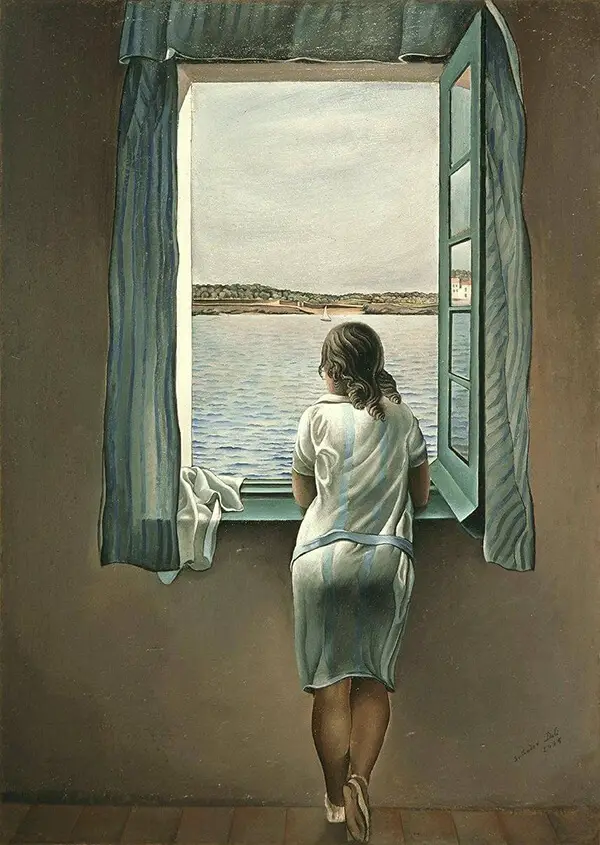The painting was produced by Salvador during one of his family holidays in Cadaques.
Much of the evidence to help us conclude as to it's location is the small reflection in the opened window, which shows the same style of architecture that would be found in Cadaques, both then and now.
However, it is unknown whom the home belonged to, the lady captured is likely to be looking out from a holiday home owned by the Dalis, or borrowed for a summer trip from other affluent friends.
What is known about the painting is that the view would have been spectacular and of great significance to Dali. It would also appear in other paintings from his career, marking it's prominence in his youthful memories.
It is easy to understand why this region became a popular national tourist destination.
Dali was best known for his spectacular and colourful works of surrealism, but this painting would appear to be more along the lines of classical realism. We have the dark haired woman who is stood, leaning against the open window, looking out onto a beautiful, scenic bay.
The main focus of the painting, Young Woman at a Window, for the observer, is not upon what can be seen through the open window, but rather the woman, whose face cannot be seen. What also makes this painting more authentic and real, is that the woman was Dali's younger sister, Ana Maria.
Dali frequently used his sister as a model for his early paintings. It was only from 1929 onwards, that he then began to use his wife as his muse.
It was also widely reported that during Dali's turbulent and later, that he fell out with his sister and refused to have any contact with her. Much of which was discussed within his autobiography.
His hatred towards her also moved him to an act of revenge when he painted a similar version to the Person at the Window, that he named 'Young Virgin Autosodomized by her Own Chastity' that also featured Ana Maria.

